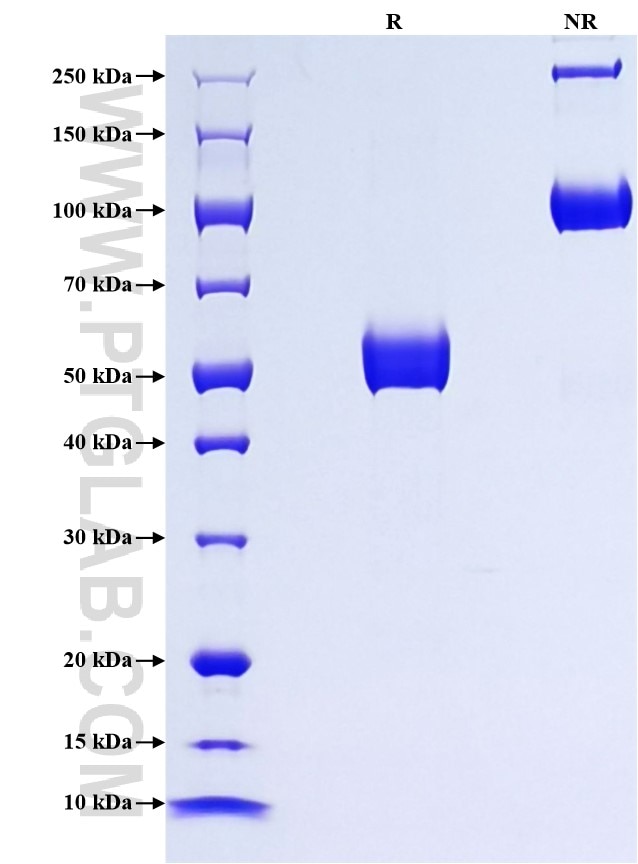Recombinant Human OLR1/LOX1 protein (rFc Tag)
Species
Human
Purity
>90 %, SDS-PAGE
Tag
rFc Tag
Activity
not tested
Cat no : Eg2911
Validation Data Gallery
Product Information
| Purity | >90 %, SDS-PAGE |
| Endotoxin | <0.1 EU/μg protein, LAL method |
| Activity |
Not tested |
| Expression | HEK293-derived Human OLR1 protein Ser61-Gln273 (Accession# P78380-1) with a rabbit IgG Fc tag at the C-terminus. |
| GeneID | 4973 |
| Accession | P78380-1 |
| PredictedSize | 50.4 kDa |
| SDS-PAGE | 48-60 kDa, reducing (R) conditions |
| Formulation | Lyophilized from 0.22 μm filtered solution in PBS, pH 7.4. Normally 5% trehalose and 5% mannitol are added as protectants before lyophilization. |
| Reconstitution | Briefly centrifuge the tube before opening. Reconstitute at 0.1-0.5 mg/mL in sterile water. |
| Storage Conditions |
It is recommended that the protein be aliquoted for optimal storage. Avoid repeated freeze-thaw cycles.
|
| Shipping | The product is shipped at ambient temperature. Upon receipt, store it immediately at the recommended temperature. |
Background
OLR1/LOX-1 acts as a receptor, in the form of homodimer, that mediates the recognition, internalization, and degradation of oxidatively modified low density lipoprotein (oxLDL). ORL1 is predominantly expressed in endothelial cells and vascular-rich organs such as the placenta, lung, liver, and brain. OLR1 is a protein containing 273 amino acids with a calculated molecular mass of 31 kDa but an apparent molecular mass of 50 kDa, which may result from the glycosylation of four potential N-linked glycosylation sites located at the C-terminal domain.
References:
1. Sawamura T, et al. (1997). Nature. Mar 6;386(6620):73-77. 2. Park H, et al. (2005). J Biol Chem. 280(14):13593-13599. 3. Yamanaka S, et al. (1998). Genomics. Dec 1;54(2):191-9.

